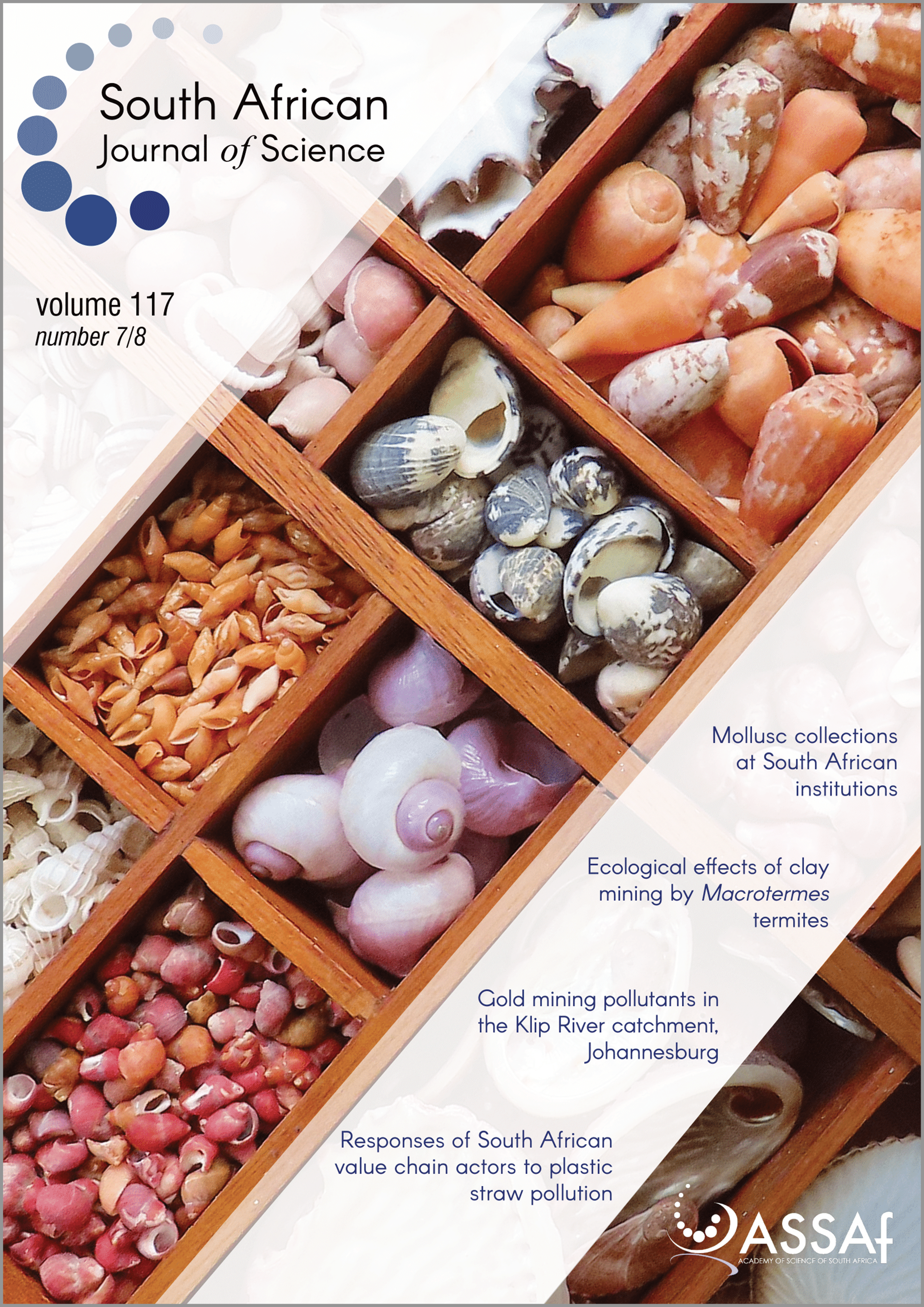Fish farm effluent as a nutrient source for algae biomass cultivation
DOI:
https://doi.org/10.17159/sajs.2021/8694Keywords:
fish farm, microalgae, biodiesel, nitrogen, phosphorus, growth mediaAbstract
One of the challenges of microalgae biotechnology is the cost of growth media nutrients, with microalgae consuming enormous quantities of fertilisers, more than other oil crops. The traditional use of synthetic fertilisers in mass cultivation of microalgae is associated with rising prices of crude oil and competition from traditional agriculture. The fact that fish farm wastewater (FFW) nutrients are released in the form preferred by microalgae (NH3 for nitrogen and PO4-3 for phosphate), and the ability of microalgae to use nitrogen from different sources, can be exploited by using fish farm effluent rich in nutrients (nitrogen and phosphorus) in the cultivation of cheaper microalgae biomass for production of biodiesel. The cultivation of algae biomass in FFW will also serve as wastewater treatment. We reviewed the benefits and potential of fish effluent in algae cultivation for the production of biodiesel. Microalgae can utilise nutrients in FFW for different applications desirable for the production of biomass, including the accumulation of lipids, and produce a fuel with desirable properties. Also, treating wastewater and reducing demand for fresh water are advantageous. The high lipid content and comparable biodiesel properties of Chlorella sorokiniana and Scenedesmus obliquus make both species viable for FFW cultivation for biodiesel production.
Significance:
- The cost associated with microalgae growth media nutrients can be saved by using fish farm wastewater, which contains nutrients (nitrogen and phosphorus) suitable for microalgae cultivation.
- Fish farm wastewater has lower nutrient concentrations when compared to standard growth media suitable for higher lipid accumulation.
- Microalgae used as a biodiesel feedstock, cultivated in fish farm wastewater, has added benefits, including wastewater treatment.
Published
Issue
Section
License

All articles are published under a Creative Commons Attribution 4.0 International Licence
Copyright is retained by the authors. Readers are welcome to reproduce, share and adapt the content without permission provided the source is attributed.
Disclaimer: The publisher and editors accept no responsibility for statements made by the authors
How to Cite
- Abstract 1168
- PDF 1100
- EPUB 173
- XML 191













.png)